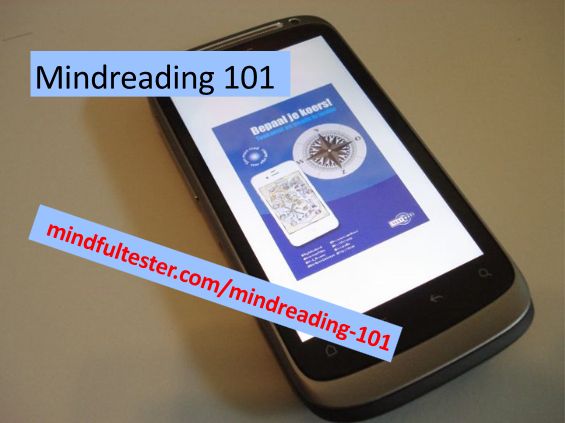Summer in Europe and it was warm. I was thinking about an upcoming challenge of #30daysoftesting. I had to create a crazy test.
What about a crazy test with the ultimate penalty, the loss of LinkedIn? That would make me crazy.
Can you imagine that?
It all started with this
This blog post was originally posted on LinkedIn.
- #LinkedIn Changes I Use
Some things never change in LinkedIn: total strangers who want to be connected, and a neat CV builder. During my fifteensome years utilising this very service – as we use – LinkedIn did change. This is my personal report about the changes I noticed and am still using.Nowadays requests to be connected can only be handled with a yes or no. To be more precisely v or x. In the past it was possible to have extensive dialogues by replying to invitations, but that is past tense. Apparently some people wanted a standard button.Even replies on job offers are streamlined with three buttons with standard brief answers. They can be summarised as Yes, Maybe and No using pictures of respectively v, a Rolodex card (!), and x. The job offers can still be used for two way communication without the exchange of email addresses.The options for the CV have been extended with voluntary work and certifications. The first is to show that I care about non related work items. The latter are in high demand by abbreviation loving recruiters and HR people (or in reverse order). Somehow they seem to be connected. There is still no proper place to mention, that I am a World Record Holder in juggling.A few years ago I noticed that LinkedIn became a more closed community. Profiles can still be found using search engines, but they cannot be viewed without LinkedIn account. The advantage is that I can track views of my profile better than a decade ago. Probably even my own views on my own posts. In particular cases companies and job titles of viewers can be determined. A blog post is not part of a profile, so information of the viewers is being collected. If you are the only reader of this blog post today, I can determine your job title, your location, and your industry.
The biggest change for me is free blogging on LinkedIn. This is very appealing for a Dutch man. There is a reasonable editor, which offers basic functionality. My first thought was “What You See Is What You Get”, but that was temporary. Extensive editing added random new lines or even unwanted bullets in the blog post. This once led to an embarrassing moment, when I showed a colleague my poorly edited LinkedIn blog post.
Editing during multiple sessions was an exercise in patience. For months I added a new dummy blog post in order to continue editing my draft blog post. Of course I removed the empty blog posts afterwards, but this was not user friendly. The normal and unusual way is to select “edit profile”, select “see more” in the posts section, and then go to my last draft version. In known blog software profile and blogs are different things. In LinkedIn the blog posts are part of the profile, so no information should be collected from the viewers when indicated. Hereby illustrating an inconsistency with a situation as described a few paragraphs above.
For a person with no background in marketing like me it was quite challenging to position a picture in the header of the post. A seemingly random chosen rectangle or blow up is selected to be shown. This view can only be changed by moving it left or right. My first reaction was to decrease the resolution of the picture. Then I got a cryptic message, that the resolution must have a minimum specified size. Now I had to figure a way to count the number of pixels in two directions. This added another dimension to voluntary work.
After having placed my first blog post I got a nice mail with statistics. It was quite hopeful: I scored likes and a decent number of views. Then I noticed some disadvantages: no mails are sent, if my blog posts were viewed a few times. And likes are noted as permanent instead of updated regularly. So my advice to the reader is not to brag about the number of likes.
A legitimate question for me would be: “Why did you not describe the other LinkedIn changes you stopped using?”. My answer is: “This is a time saver.”
Try hard
Losing my Twitter account is bad, but my LinkedIn account would be worse. I would basically be non existent and therefore have no credibility at all. Especially for recruiters, if they still could find me.
In order to minimise the loss I made a backup of all my contacts, my blog posts , and my profile including recommendations. Check.
Then I hit the Publish button.
I got a final warning. I confirmed my action.
In the days after the publication I expected a polite mail from LinkedIn to express concerns with the contents of the blog post. And an explicit request to remove the blog post. Nothing happened.
Actually tensome people read my blog post. It did not go viral. Nothing to report about. But I just did.
Try hard with a vengeance
A few weeks later it was summer in Europe and it was warm. I thought about my blog post, that did not concern any people, except me of course.
Obviously the inconsistent use of settings was of no concern for any one. If someone looks to a LinkedIn blog post, the area, where the reader lives, the job title, and the industry of the reader are collected in sets. If I would have one reader a day, then I could easily combine the information. Nobody would flinch, if I told in which industry she /he worked. That left area and job title. This still had a low scary level.
I had the perfect plan to increase the level of craziness for my test by changing the tone of voice. So I twittered:
- If you click on this link, I know where you live and your job title.
Lnkd.in/e-Dnk_y
#crazy #test
Day 6 of #30dayssoftesting
On that day nobody clicked on the link . I repeat: On that day nobody clicked on the link . And no request to change my blog post. Fortunately.



